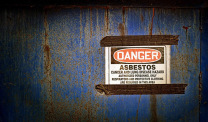Canada Introduces New Asbestos Regulations
Asbestos Exposure & BansWritten by Matt Mauney | Edited By Walter Pacheco

Two Canadian government agencies are sponsoring legislation that will prohibit the import, use and sale of asbestos and products containing the cancer-causing mineral.
The proposed Prohibition of Asbestos and Asbestos Products Regulations, sponsored by Environment and Climate Change Canada and Health Canada, comes more than a year after the Canadian government promised a comprehensive ban on asbestos by 2018.
Additional amendments to the existing Export of Substances on the Export Control List Regulations (ESECLR) would restrict the export of all forms of asbestos, going beyond Canada’s commitment under the Rotterdam Convention.
Together, the proposals aim to eliminate the market for asbestos products in Canada and protect Canadian workers from the dangers of asbestos exposure.
Once a world leader in asbestos production, Canada plans to join more than 55 countries that have already banned the toxic mineral. Experts estimate asbestos was responsible for 1,900 lung cancer cases and 430 mesothelioma cases in Canada in 2011.
While the use of asbestos has steadily declined over the last 30 years, heavy use between the 1970s and 1990s has led to many Canadians suffering from asbestos-related diseases today.
“By launching these new, tougher rules to stop the manufacture, import, use and sale of asbestos, we are following through on our promises to protect all Canadians from exposure to this toxic substance,” Environment and Climate Change Minister Catherine McKenna told CBC News.
The proposed regulations are now under a period of public consultation, where comments and suggestions will be considered in the development of the final legislation — set to go into effect later this year.
Anti-Asbestos Advocates Say Rules Don’t Go Far Enough
The proposed rules received mostly high praise from environmental groups, but some anti-asbestos advocates claim exemptions under the laws are problematic and don’t adequately protect Canadian workers.
Asbestos is often interwoven with other naturally occurring minerals such as talc, which can lead to cross-contamination. The proposed regulations would not prohibit mining activities where asbestos may be found.
The rules also wouldn’t cover the use and sale of asbestos-containing products installed prior to the regulations, such as those found in buildings, civil engineering works and vehicles.
Construction workers, firefighters, shipyard workers and mechanics are all considered high-risk occupations for asbestos exposure because of the prevalence of asbestos in older infrastructure and vehicles.
“We’re not entirely sure [the proposed regulations] will protect worker safety,” Jesse Todd, chairman of the board of the Saskatchewan Asbestos Disease Awareness Organization, told CBC News. “There should be some sort of systematic removal across the country over a set period of time.”
Estimates show about 134,000 Canadian workers in the construction and trades industry — roughly 96 percent — are potentially exposed to asbestos at the workplace.
An estimated 4,300 mechanics and maintenance workers who repair and replace old brakes and clutches are also at risk.
The regulatory impact analysis statement for the proposed rules estimates asbestos imports would fall by more than 4,700 tons between 2019 and 2035, including nearly 2,500 tons from the construction industry.
Approximately 94 percent of the reductions in asbestos would come from imports used by the construction and automotive industries. However, this does not cover existing asbestos-containing products, known as legacy asbestos.
“As a result of decades of use, many products and installations, including buildings and homes, still contain asbestos,” the analysis statement said. “For the most part, health risks are low if the products containing asbestos, such as insulation, are left in place. Requiring all asbestos to be removed from sources such as buildings and homes would be extremely costly and may actually lead to more harm to human health. Therefore, this option was rejected.”
Anti-asbestos advocates such as Todd and Kathleen Ruff of RightOnCanada.ca are pushing for a national registry of asbestos-containing buildings as well as standards for asbestos removal. The proposed regulations cover neither.
“Initiate a national strategy to inform Canadians of the continuing hazards posed by asbestos in buildings and infrastructure and … launch a national campaign to provide information and assistance to asbestos victims and their families,” Ruff said.
The proposed asbestos regulations would also not apply to:
- Pest control products regulated under the Pest Control Products Act.
- Asbestos products imported or sold for display in a museum.
- The chloralkali industry, which is granted a limited-time exclusion for the import of asbestos until Dec. 31, 2025. The industry uses asbestos diaphragms in its chlorine manufacturing process.
- Asbestos-containing materials used for scientific research.
- Mining residues, which are a leftover legacy from decades of asbestos mining. An estimated 800 million tons of asbestos mining residues remain in Quebec. The only exceptions to this are the sale and use of the residues for construction and landscaping — unless authorized by the province — and the use of the residues to manufacture an asbestos-containing product.
Future Health Care Savings Offset Administrative Costs
A comprehensive ban on asbestos doesn’t come cheap.
The proposed regulations look to cost the government an estimated $4 million. Administrative and compliance costs for the construction and automotive industries are estimated at roughly $30 million.
However, the proposed regulations claim the significant costs associated with asbestos-related diseases will more than make up for the costs over the next two decades.
The Canadian government spends an estimated $2 billion each year on asbestos-related cancers, according to a 2016 study from the Institute for Work & Health.
According to the analysis statement, preventing a single case of lung cancer or mesothelioma provides a social welfare benefit valued at more than $1 million. Estimates show if at least five cases are prevented each year, the health care savings would offset the administrative and compliance costs ($34 million) over a 17-year period.
The chloralkali industry in Canada could potentially move its operation outside the country, resulting in an estimated $8 million economic loss each year. However, the analysis shows an investment into asbestos-free technologies could lead to a net savings over time.






